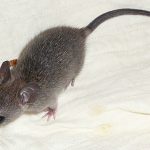MELOMYS
Melomys is a genus of rodents that includes several species of small rodents in the family Muridae. These animals are commonly referred to as “melomys” and are found in various parts of the world, primarily in Australia and the surrounding islands in the southwestern Pacific Ocean. Melomys species are known for their adaptation to diverse habitats, including coastal areas, rainforests, and mangroves.
There are four recognized species of Melomys found in Australia:
Cape York Melomys (Melomys capensis)
The Cape York melomys is native to Cape York Peninsula in Queensland. It is also known as the Cape York rat or Cape York native mouse.
Cape York melomys have a body length of about 12-17 cm and a tail is long and scaly with a length of 14-20 cm. They have soft, grey-brown fur with a paler underside.
These rodents are found in a variety of habitats, including rainforests, woodlands, heathlands, and mangroves, within the Cape York Peninsula. They are primarily terrestrial but are also known to climb trees and shrubs.
Cape York melomys are herbivorous and primarily feed on plant material, including leaves, fruits, and seeds. They are important seed dispersers for some plant species in their habitat.
They are generally nocturnal and solitary animals, although they have been observed in small groups on occasion. Cape York melomys are known to construct shallow burrows and nests, often within the tangled roots of trees.
The primary threats to their population include habitat loss due to land development and changes in fire regimes. Additionally, introduced predators like dogs, cats and foxes pose a significant threat to this species.
Not much is known about the breeding habits of Cape York melomys. However, they are believed to give birth to one or two offspring at a time, and their reproductive habits are thought to be influenced by the seasonal availability of food.
Fawn-footed Melomys (Melomys cervinipes)
Fawn-footed Melomys typically measure bout 10 to 15 cm in length, with a tail that can add an additional 10 to 15 cm.
They have a characteristic fawn or brownish-grey fur, and their feet are often a paler color, giving them their common name.
Their tails are long and scaly, and they use them for balance and as a prehensile appendage to help them climb and move around in their habitat.
Fawn-footed Melomys are found in a variety of habitats in northern and eastern Australia, including Grasslands, Open woodlands, Riparian zones (areas along rivers and streams) Rainforests and Coastal areas. They are highly adaptable and can be found in a range of environments, but they prefer areas with tall grasses, which they use for cover and foraging.
Fawn-footed Melomys are primarily herbivores, and their diet consists of a variety of plant materials, such as seeds, fruits, and grasses. They are known to be active mainly at night (nocturnal) and are generally shy and secretive. They are excellent climbers and are often found in the trees and shrubs, where they seek food and shelter.
Breeding behavior and reproduction in Fawn-footed Melomys may vary based on their specific habitat and environmental conditions. However, they typically give birth to litters of multiple pups after a gestation period of approximately 30 days. The young are born blind, hairless, and dependent on their mother for care and nourishment.
The conservation status of the Fawn-footed Melomys, like many small mammals, is not well-documented. While they were once relatively common, some populations have declined due to introduced predators, habitat loss and environmental changes. they play an essential role in the ecosystems they inhabit
Grassland Melomys (Melomys burtoni)
The Grassland Melomys are native to Australia, specifically the North-eastern region of Queensland. They are commonly found in grasslands and open habitats, including savannas and marshy areas.
Grassland Melomys are small rodents with a stocky body and a length of around 12-15 cm. They have a long, slightly prehensile tail that can reach lengths of up to 15-18 cm. Their fur is typically brown or greyish-brown, which helps them blend into their grassy habitats.
As their name suggests, Grassland Melomys prefer grassy environments, such as grasslands, savannas, and areas with dense grass cover. They are also known to inhabit marshes, wetlands, and other open areas.
These rodents are typically nocturnal, meaning they are more active during the night. They are herbivorous, primarily feeding on grasses and plant materials.
Grassland Melomys are known to reproduce year-round, and females give birth to litters of 1-3 young after a gestation period of approximately 24 days. The young are born blind and hairless, but they quickly develop and are weaned after a few weeks.
The Grassland Melomys is considered to be a species of least concern in terms of conservation status. However, like many small rodents, their populations are affected by habitat loss, introduced predators such as dogs, cats and foxes.
Bramble Cay melomys Melomys rubicola
The Bramble Cay melomys was declared extinct in June 2014 (Woinarski et al. 2014).
It was a small rodent species that lived on Bramble Cay, a small coral island in the Great Barrier Reef, near northern Australia. This species was also known as the Bramble Cay mosaic-tailed rat.
Tragically, the Bramble Cay melomys is considered the first mammal to become extinct due to human-induced climate change. The main factor contributing to its extinction was rising sea levels and the resulting loss of habitat due to climate change. The cay (a low-lying island) where the melomys lived was gradually inundated by seawater, leading to habitat loss and eventually the extinction of the species. The last recorded sighting of the Bramble Cay melomys was in 2009, and extensive efforts to locate the species afterward were unsuccessful.
The extinction of the Bramble Cay melomys serves as a poignant example of how climate change can have a direct impact on vulnerable species and highlights the urgent need for conservation efforts and climate change mitigation to protect biodiversity.

